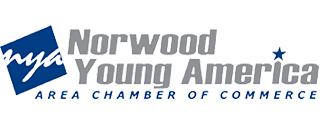In busy warehouses, shipping centers, and loading docks, dock plates play a vital role in bridging the gap between loading docks and trailers. They help ensure the smooth and safe transfer of goods. However, like any equipment that undergoes constant use and heavy loads, dock plates can wear down over time. Ignoring signs of damage can lead to serious safety hazards, equipment failure, and costly downtime.
Knowing the warning signs can help you act quickly and prevent larger issues. Here are the top signs that your dock plate needs immediate attention—and why timely dock plate repair is essential.
1. Visible Cracks, Warping, or Bent Edges
One of the most obvious signs of damage is physical deformity. If you notice cracks on the surface, warping of the plate, or bent edges, it’s time for immediate repair. These issues can compromise the structural integrity of the dock plate, making it unsafe for forklifts or foot traffic. A compromised surface may also cause damage to goods being moved across it.
2. Unusual Noises During Use
A properly functioning dock plate should operate quietly. If you start hearing creaking, grinding, or clunking sounds when equipment moves over the plate, it could indicate hidden damage beneath the surface or loose components. Ignoring these noises could lead to more severe problems and higher repair costs down the line.
3. Slippery or Worn Surface
Over time, the surface of a dock plate can become worn down or slick—especially if it’s used frequently in wet or greasy conditions. A slippery surface increases the risk of accidents and injuries. If traction is compromised, the plate may need resurfacing or replacement to meet safety standards.
4. Difficulty in Positioning the Plate
If your manual or mechanical dock plate becomes difficult to maneuver or doesn’t sit properly between the dock and trailer, it could be a sign of mechanical failure or misalignment. This issue can lead to unstable loading conditions and potential damage to both equipment and products.
5. Rust and Corrosion
Rust may seem like a cosmetic issue at first, but over time, it weakens the metal and can compromise the strength of the dock plate. If corrosion is widespread or affecting critical joints and hinges, prompt repair or replacement is necessary to maintain safety.
6. Frequent Equipment Damage or Accidents
If you’re noticing more frequent incidents involving equipment tipping, goods falling, or workers stumbling at the loading area, the dock plate could be a contributing factor. An uneven or unstable surface increases the risk of accidents, and repairing it can help restore a safe working environment.
7. Plate Doesn’t Align Properly with Trailers
When a dock plate no longer aligns evenly with trailers—either sitting too high, too low, or at an angle—it can lead to unsafe loading conditions. This misalignment often indicates wear in the hinges or support structure and should be inspected immediately.
Your dock plate is a critical part of daily operations, and any signs of damage should not be overlooked. Regular inspection and quick action when issues arise are key to maintaining a safe and efficient workplace. If you notice any of the signs above, scheduling a professional dock plate repair can prevent injuries, protect your equipment, and keep your loading operations running smoothly. Don’t wait until it’s too late—take the time to ensure your dock plate is functioning safely and correctly.


